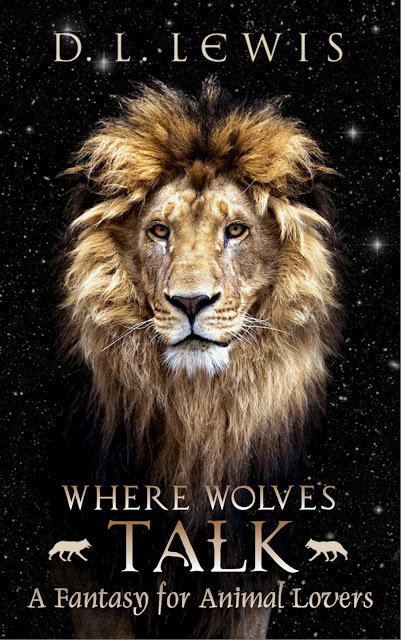
In Where Wolves Talk, the first in a two-part fantasy, D.L. Lewis invites young readers to suspend belief in order to take part in an epic adventure to a mystical world of talking animals and grey monsters.
Kitten, an American Shorthair Silver Classic tabby breed, was born deformed, but despite his deformities, he nevertheless lives a charmed life in a mansion in the countryside northeast of London, dining in style on fresh salmon flown in by helicopter from a Scottish loch and poached by his mistress’ own Swiss chef, followed by hunks of blue-veined Stilton served on an antique porcelain plate. By all accounts, he should have been one very happy cat except for one small problem. Bred to be a hunter, Kitten feels like he’s a housebound prisoner until one day, he speaks to a turtle dove outside the library window and everything changes.
The turtle dove notices an “unearthly glow” in Kitten’s eyes and believes that he’s been touched by the evil Flobbertigobbet and has become its servant, and tells Kitten that there’s a small door in the library that leads to the world where the Flobbertigobbet lives. The last person to go through the Door did so hundreds of years earlier and never came back. Once Kitten goes through the Door, he finds himself in a place that seems pretty ordinary – until he meets some very unusual animals like a mouse on a cell phone driving a gold SUV and a grey She-Wolf who commands an impressive army against the grey monsters…
The use of talking animals that possess human-like qualities in fiction, especially children’s fiction, is not a unique concept. Typically, the animals convey human morals and behavior, or lack of morals as the case may be. They are often used to underscore man’s thoughtless pursuit of technological advancement to the detriment of the environment and nature’s own habitat. Lewis deftly uses the settings and acts of nature as a means of organically conveying these messages. Leadership and loyalty play an integral role in the story, creating a positive message. While not hitting readers over the head with parable, these components are woven smoothly into the story, which will help get the message across, without seeming like a “lesson.”
The writing in Where Wolves Talk is immediately engaging: fluid and straightforward in some places, more subtle in others. This style translates well in this anthropomorphic fantasy adventure and is somewhat reminiscent of another Lewis writing in the same genre, as may be apparent by the cover. The sketches throughout the book of Kitten convey a playful and curious spirit while those of the She-Wolf and Horse epitomize intelligence and strength of character. Once on the other side of the Door, the scenery and settings change constantly and Lewis’ descriptions are full of emotion and imagery without overwhelming younger readers.
Some of the passages that deal with the Flobbertigobbet morphing from a “prince” into a monster are somewhat vivid, which may be frightening for some young children, but children’s fiction does not need to shy away from all dark imagery, and Lewis is a fine writer for children, aptly balancing evocative descriptions and subtle allegory, and moving the story along at a quick pace.
Imaginative, sometimes intense but utterly entertaining, Where Wolves Talk will have readers eagerly anticipating the sequel.
Book Links
STAR RATING
Design
Content
Editing
Get an Editorial Review | Get Amazon Sales & Reviews | Get Edited | Publish Your Book | Enter the SPR Book Awards | Other Marketing Services























Leave A Comment